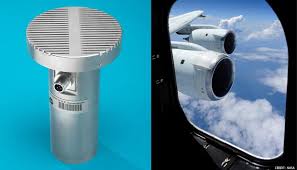A lot of people travel by air, but not all have experienced turbulence. But those who had a hard-luck during an air journey and faced turbulence would know how horrible it is to get caught in one.
The horizontal tornado, commonly called turbulence, can make the passengers tightly grip their seats while their life is at risk. Having faced turbulence during a flight is a terrible and dangerous experience that no one wishes.
Avoiding these turbulences can cost tons of extra fuel, as it asks for a re-route, hence increasing a flight’s cost.

To tackle the long-standing issue, researchers from NASA have developed a microphone that can detect and predict turbulences from a distance of 300 kilometers. The new technology could catch pitches so low that human ears cannot hear, starting 0.001 hertz to 20 hertz, as per a report by the Space Agency.
Turbulences can take place without any warning and are not visible to naked eyes. However, the developers say these turbulences can be caught with the new microphone as they have distinguished infrasound. An alarming system could be developed using the new microphone, which gives an early warning of an occurrence of turbulence.
The team began developing a microphone that could trace even the lowest of frequencies generated by possible turbulence. They employed a low-tension diaphragm paired with a big sealed air chamber behind it to enable the detection of sound waves from long distances. The duo was able to pick up and trace atmospheric turbulence at a distance of up to 300 km per their testing with the new microphone.

Stratodynamics licensed the patents from NASA and implemented the sensor on HiDRON, a stratospheric glider working in the absence of a crew.
The microphone’s early testing has shown promising results. Differentiating between ambient conditions and the low frequency was successful. More testing will be conducted to learn about the turbulent signature’s intensity and range.
“As infrasonic detection continues to prove its value as a turbulence mitigation technology, its potential to forever alter the landscape of aviation grows stronger with every flight,” stated Nick Craine, business development lead at Stratodynamics.

The team behind the build hopes their invention would be put to greater use. They expect it would prove effective in predicting future turbulence. The new invention comes as a breakthrough, ensuring comfortable and secure flights safe from the occurrence of turbulence.


